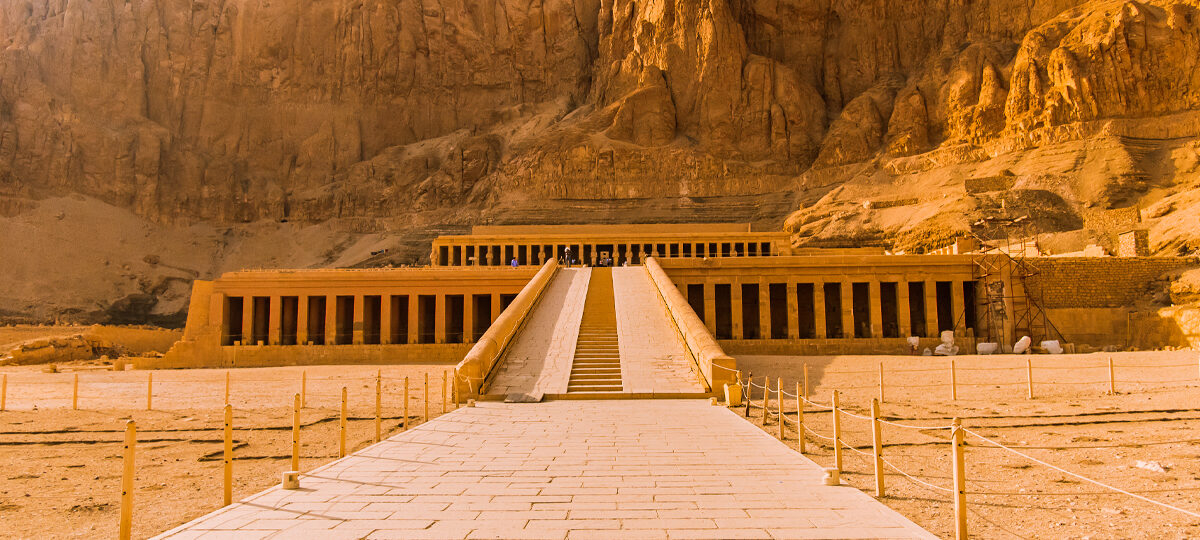Hatshepsut Temple
The dramatic mountain setting at Deir al-Bahri is a beautiful backdrop for the Temple of Hatshepsut’s Tomb. During the 18th Dynasty, Queen Hatshepsut’s architect Senenmut built a beautiful structure. It is made up of a series of beautiful terraces that rise from the desert plain After Ramses II and his successors destroyed the temple, Christians turned it into a monastery.
It is now called Deir al-Bahri, which means “Northern Monastery.” But as more of the site is dug up, more and more beautiful ornaments are being found. Right next to the main temple are the ruins of the Temple of King Montuhotep II of the 11th Dynasty, who united Egypt, and the Temple of King Tuthmosis III of the 18th Dynasty Parts of the Hatshepsut Temple’s architecture.
The Temple of Montuhotep II was built.
Hatshepsut’s Temple was based on the old Temple of Montuhotep II, which is now in ruins.
Bahri’s Plan to Rebuild Deir el-TemplesHere is a copy of the Temples of Montuhotep II, Tuthmosis III, and Hatshepsut, which were built during the 18th dynasty. The huge cliffs in the background give a sense of grandeur to the three temples, which are both carved into the rock and stand alone.
The Hathor Hall.

One of the things that make this church stand out are the columns with the heads of Hathor. This relief of the ankh and djed pillar, which are symbols of life and stability, is just one example of how much of the walls’ original colour has been kept.
Hatshepsut statues.

Osiride sculptures of Hatshepsut, who was usually shown as a man with a beard, were placed on the portico columns that surrounded the top terrace. Even though they were broken by later pharaohs, several sculptures have recently been put back together from their pieces the Chapel of Anubis The paintings in the chapel are bright and colourful, and they show Tuthmosis III making offerings to the sun god Ra-Harakhty.
A Colonnade for Bringing a Baby Into the World Scenes along the Birth Colonnade show how Hatshepsut was born in heaven, which was meant to prove that she had a right to be queen. On the right, the goddess Neith is seen holding the young queen Thanks for a Punt Trip’s Worth In beautiful reliefs, the trip of Hatshepsut to the Land of Punt is shown (Somalia). In this picture, King Punt is standing next to his fat wife, Ati (on the left).

